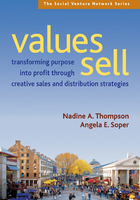[1]Abraham,R。(1998)。Emotional dissonance in organizations:Antecedents,consequences,and moderators。Genetic,Social,and General Psychology Monographs,124,229-246。
[2]Adelman,P。K。(1989)。Emotional labor and employee well being。Unpublished doctoral dissertation,University of Michigan,Ann Arbor。
[3]Adelman,P。K。,and R。Zajonc。(1989)。Facial efference and the experience of emotion。Annual Review of Psychology,40:249-280。
[4]Aderman,D。,Unterberger,G。L。(1977)。Contrast empathy and observer modeling behavior。Journal of Personality,45,267-280。
[5]Albrecht,K。,Zemke,R。(1985)。Service America!Doing business in the new economy。Homewood,IL:Dow Jones Irwin。
[6]Andersen,S。M。,Glassman,N。S。(1996)。Responding to significant others when they are not there:Effects on interpersonal inference,motivation,and affect。In R。SorrentinoE。T。Higgins(Eds。),Handbook of motivation and cognition(Vol。3,pp。272——331)。New York:Guilford Press。
[7]Andersen,S。M。,Reznik,I。,Manzella,L。M。(1996)。Eliciting facial affect,motivation,and expectancies in transference:Significant other representations in social relations。Journal of Personality and Social Psychology,71,1108-1129。
[8]Arrow,H。(1997)。Stability,bistability,and instability in small group influence patterns。Journal of Personality and Social Psychology,72,75-85。
[9]Ashforth,B。E。,Humphrey,R。H。(1993)。Emotional labor in service roles:The influence of identity。Academy of Management Review,18,88-115。
团队情绪气氛理论及实证参考文献[10]Ashforth,B。E。and R。H。Humphrey。(1995)。Emotion in the workplace:A reappraisal。Human Relations,48(2):97-125。
[11]Ashforth,B。E。,Tomiuk,M。A。(2000)。Emotional labour and authenticity:Views from service agents。In S。Fineman(Ed。),Emotion in organizations(2nd ed。,pp。184-203)。London:Sage。
[12]Ashkanasy,N。M。,Tse,B。(2000)。Transformational leadership as management of emotion:A conceptual review。In N。M。Ashkanasy,C。E。Haertel,W。Zerbe(Eds。),Emotions in the workplace:Research,theory,and practice(pp。221-235)。Westport,CT:Quorum Books/Greenwood。
[13]Ashkanasy,N。M。,Hartel,C。E。J。,Zerbe,W。J。(Eds。),(2000)。Emotions in workplace(pp。3-18)。Westport,CT:Quorum Books。
[14]Ashton,A。H。,and R。H。Ashton。(1990)。Evidence responsiveness in professional judgment:Effect of positive versus negative evidence presentation mode。Organizational Behavior and Human Decision Processes,46:1-19。
[15]Averill J。R。The Emotions[A]。In R。Hogan,J。Johnson,S。R。Briggs(Eds。),(1997)。Handbook of personality:theory and research[C]。San Diego:Academic Press,513-541。
[16]Back,K。W。(1951)。Influence through social communication。Journal of Abnormal and Social Psychology,46,9-23。
[17]Bales,R。F。(1950)。Interaction process analysis:A method for the study of small groups。Reading,MA:Addison-Wesley。
[18]Bandura,A。(1986)。Social foundations of thought and action:A social cognitive theory。Englewood Cliffs,NJ:Prentice Hall。
[19]Baron,R。A。(1993)。Affect and organizational behavior:When and why feeling good(or bad)matters。In J。K。Murnighan(Ed。),Social psychology in organizations:Advances in theory and research(pp。63——88)。Englewood Cliffs,NJ:Prentice Hall。
[20]Bar On,R。(2000)。Emotional and social intelligence:Insights from the emotional quotient inventory。In R。Bar OnJ。A。D。Parker(eds。),The handbook of emotional intelligence(pp。363-388)。San Francisco,CA:Jossey Bass。
[21]Barsade,S。G。(2000)。The ripple effect:Emotional contagion in groups。Working Paper 98,Yale School of Management,Yale University,New Haven,CT。
[22]Barsade,S。G。,Gibson,D。E。(1998)。Group emotion:A view from top and bottom。In D。Gruenfeld,E。Mannix,M。Neale(Eds。),Research on managing groups and teams(pp。81-102)。Stamford,CT:JAI Press。
[23]Barsade,S。G。,Ward,A。J。,Turner,J。D。F。,Sonnenfeld,J。A。(2000)。To your heart’s content:The influence of affective diversity in top management teams。Administrative Science Quarterly,45,802——836。
[24]Bartel,C。,Saavedra,R。(2000)。The collective construction of work group moods。Administrative Science Quarterly,45,197——231。
[25]Bavelas,J。B。,Black,A。,Lemery,C。R。,Mullett,J。(1987)。Motor mimicry as primitive empathy。In N。EisenbergJ。Strayer(Eds。),Empathy and its development:Cambridge studies in social and emotional development(pp。317——338)。New York:Cambridge Univ。Press。
[26]Becker,D。,Lira,E。,Costillo,M。,Gomez,E。Kovalskys,J。(1990)。Therapy with victims of political repression in Chile:The challenge of social reparation。Journal of Social Issues,46,133-149。
[27]Benedict,R。(1970)。Synergy:Patterns of the good culture。American Anthropologist,72,320-333。
[28]Berk,M。S。,Andersen,S。M。(2000)。The impact of past relationships on interpersonal behavior:Behavioral confirmation in the social cognitive process of transference。Journal of Personality and Social Psychology,79,546-562。
[29]Bernieri,F。,Reznick,J。S。,Rosenthal,R。(1988)。Synchrony,pseudosynchrony,and dissynchrony:Measuring the entrainment process in mother infant dyads。Journal of Personality and Social Psychology,54,243-253。
[30]Berscheid,E。(1983)。Emotion。In H。H。Kelley,E。Berscheid,A。Christensen,J。H。Harvey,T。L。Huston,G。Levinger,E。McClintock,L。A。Peplau,D。R。Peterson(Eds。),Close relationships(pp。110——168)。New York:Freeman。
[31]Blake,R。R。,Mouton,J。S。(1984)。Solving costly organizational conflicts:Achieving intergroup trust,cooperation,and teamwork。San Francisco:Jossey-Bass。
[32]Bliese,P。D。(2000)。Within-group agreement,non independence,and reliability:Implications for data aggregation and analysis。In K。KleinS。W。Kozlowski(Eds。),Multilevel theory,research,and methods in organizations(pp。349——381)。San Francisco:Jossey-Bass。
[33]Booth Kewley,S。,Friedman,H。S。(1987)。Psychological predictors of heart disease:A quantitative review。Psychological Bulletin,101,343-362。
[34]Bornstein,G。,Budescu,D。,Zamir,S。(1997)。Cooperation in intergroup,N person,and two person games of chicken。Journal of Conflict Resolution,41,384——406。
[35]Bouts,P。,O。Luminet,S。R。Manstead,and B。Rime。(1995)。Social sharing of emotion:Experimental evidence。Unpublished manu。
[36]Braun de Dunayevich,J。,Puget,J。(1989)。State terrorism and psychoanalysis。International Journal of Mental Health,18(2),98-112。
[37]Brief,A。P。,and H。M。Weiss。(2002)。Organizational behavior:Affect in the workplace。Annual Review of Psychology,53.Bryk,A。S。,and S。W。Raudenbush。
[38]Brim,O。G。Socialization through the life cycle。In O。G。Brim and S。Wheeler(Eds。),Socialization after childhood:Two essays。New York:John Wiley,1966,3-46。
[39]Brockner,J。Higgins,T。(2001)。Regulatory focus theory:Implications for the study of emotions at work。Organizational Behavior and Human Decision Process,86(1),35-66。
[40]Bryk,A。S。,Raudenbush,S。W。(1992)。Hierarchical linear models:Applications and data analysis methods。Newbury Park,CA:Sage。
[41]Buchholz,S。,Roth,T。,and Hess,K。,(1987),Creating the High-Performance Team,New York。NY:John WileySons,Inc。
[42]Buck,R。Par。(1984)。The Communication of Emotion。New York:Guilford Press。
[43]Buck,R。(1988)。Nonverbal communication:Spontaneous and symbolic aspects。American Behavioral Scientist,31,341-354。
[44]Burke,R。J。,Richardsen,A。M。(2001)。Psychological burnout in organizations:Research and intervention。In R。T。Golembiewski(Ed。),Handbook of organizational behavior(pp。327-363)。New York:Marcel Dekker。
[45]Cacioppo,J。T。,W。L。Gardner,and G。G。Berntson。(1997)。Beyond bipolar conceptualizations and measures:The case of attitudes and evaluative space。Personality and Social Psychology Review。1(1):3-25。
[46]Campion,M。A。,Medsker,G。J。,Higgs,A。C。(1993)。Relations between work team characteristics and effectiveness:Implications for designing effective work groups。Personnal Psychology,46,823-825。
[47]Cantril,H。(1965)。The Pattern of Human Concerns。New Brunswick,NJ:Rutgers University Press。
[48]Caplan,R。D。,Cobb,S。,French,R。P。,Harrison,R。,Pinneau,S。R。(1975)。Job demands and worker health。Washington,D。C。:Department of Health,Education,and Welfare。
[49]Cappella,J。N。(1981)。Mutual influence in expressive behavior:Adult-adult and infant-adult dyadic interaction。Psychological Bulletin,89,101-132。
[50]Carlson,J。G。Hatfield,E。(1992)。Psychology of Emotion。Harcourt Brace Jovanovich College Publishers。
[51]Chapple,E。D。(1970)。Culture and biological man:Explorations in behavioral anthropology。New York:Holt,Rinehart,Winston。
[52]Chartrand,T。L。,and J。A。Bargh。(1999)。The chameleon effect:The perception behavior link and social interaction。Journal of PersonalitySocial Psychology,76(6):893-910。
[53]Cohen,S。,Herbert,T。B。(1996)。Health psychology:Psychological factors and physical disease from the perspective of human psychoneuroimmunology。Annual Review of Psychology,47,113-142.
[54]Condon,W。S。,Ogston,W。D。(1967)。A segmentation of behavior。Journal of Psychiatric Research,5,221-235。
[55]Condon,W。S。,Ogston,W。D。(1966)。Sound film analysis of normal and pathological behavior patterns。Journal of Nervous and Mental Diseases,143,338-347。
[56]Conrad,C。,Witte,K。(1994)。Is emotional expression repression oppression?Myths of organizational affective regulation。In S。Deetz(Ed。),Communication Yearbook,17,417-428。
[57]Cordes,C。L。,Dougherty T。W。,Blum M。(1997)。Patterns of burnout among managers and professionals:A comparison of models。Journal of Organizational Behavior,18:685-70。
[58]Crandall,J。E。(1975)。Negativity bias in evaluative ratings。Journal of Social Psychology,95:109-116。
[59]Dabbs,J。M。(1969)。Similarity of gestures and interpersonal influence。Proceedings of the annual convention of the American Psychological Association,4,337-338。
[60]Davis,M。H。(1983)。Measuring individual differences in empathy:Evidence for a multidimensional approach。Journal of Personality and Social Psychology,44,113-126。
[61]Dean,J。W,Brandes P。,Dharwadkar R。(1998)。Organizational cynicism。Academy of Management Review,23:341-352。
[62]De Leeuw,J。,Kreft,I。G。G。(1995)。Questioning multilevel models。Journal of Educational and Behavioral Statistics,20,171-189。
[63]De Rivera,J。H。(1977)。A Structural Theory of the Emotions。New York:International Universities Press。
[64]De Rivera,J。H。(1984)。The structure of emotional relationships。In P。Shaver(Ed。),Review of Personality and Social Psychology,Vol。5:Emotions,Relationships,and Health。Beverly Hills,CA:Sage,pp。116-145。
[65]De Rivera,J。H。Grinkis,C。(1986)。Emotions as social relationships。Motivation and Emotion,10,351-369。
[66]Dittmann,A。T。,Llewellyn,L。G。(1969)。Body movement and speech rhythm in social conversation。Journal of Personality and Social Psychology,11,98-106。
[67]Doherty,R。W。(1998)。Emotional Contagion and Social Judgment。Motivation and Emotion,22(3):187-209。
[68]Domagalski,T。A。(1999)。Emotion in organization:Main Currents。Human Relation,52(6),833-852。
[69]Druckman,D。,Bjork,R。(1994)。Learning,remembering,believing:Enhancing human performance。Washington,DC:National Academy Press。
[70]Dubin,R。(1978)。Theory building。New York:Free Press。
[71]Duffy,M。K。,Shaw,J。D。(2000)。The Salieri syndrome:Consequences of envy in groups。Small Group Research,31,3-23。
[72]Duncan,S。D。Fiske,D。W。(1977)。Face to face interactions:Research,methods,and theory。
[73]Earley,P。C。(1994)。Self or group?Cultural effects of training on self efficacy and performance。Adm。Sci。Q。39:89-117。
[74]Eden,D。(1990a)。Pybmalion without interpersonal contrast effects:Whole groups gain from raising manager expectations。Journal of Applied Psychology,75:394-98。
[75]Eden,D。(1990b)。Pygmalion in Management:Productivity as a Self Fulfilling Prophecy。Lexington,MA:Lexington Books。
[76]Eisenberg,N。,Cumberland,A。,Spinrad,T。L。(1998)。Parental Socialization of Emotion。Psychological Inquiry,9(4),241-273。
[77]Eisenberger,R。,Armeli,S。,Rexwinkel,B。,Lynch,P。D。,Rhoades,L。(2001)。Reciprocation of perceived organizational support。Journal of Applied Psychology,86(1),42-51。
[78]Ekman,P。(1973)。Cross culture studies of facial expression。In P。Ekman(Ed。),Darwin and facial expression:A century of research in review(pp。169-222)。New York:Academic Press。
[79]Ekman,P。(1982)。Emotion in the human face。Cambridge University Press。
[80]Ekman,P。(1984)。Expression and the nature of emotion。In K。R。SchererP。Ekman(Eds。),Approach to emotion(pp。319-343)。Hillsdale,NJ:LEA。
[81]Ekman,P。,W。V。Friesen,and K。Scherer。(1976)。Body movement and voice pitch in deceptive interaction。Semiotica,16:23-27。
[82]Erickson,E。H。(1950)。Childhood and society。New York:W。W。Norton。
[83]Erickson,R。,Wharton,A。S。(1997)。Inauthenticity and depression:Assessing the consequences of interactive service work。Work and Occupation,24,188-213。
[84]Evans,C。R。,Dion,K。L。(1991)。Group cohesion and performance:A meta analysis。Small Group Research,22,175-186。
[85]Festinger,L。(1954)。A theory of social comparison processes。Human Relations,7,117-141.
[86]Field,T。M。,R。Woodson,R。Greenberg,and D。Cohen。(1982)。Discrimination and imitation of facial expressions by neeonates。Science,218:179-181。
[87]Fineman,S。(1993a)。Organizations as emotional arenas。In S。Fineman(Ed。),Emotion in organization(pp。9-35)。Newbury Park,California:Sage。
[88]Fineman,S。(Ed。),(1993b)。Emotion in organization。London:Sage Publications。
[89]Fineman,S。(1996)。Emotion and organizing。In S。R。Clegg,C。Hardy,W。R。Nord(Eds。),Handbook of organization studies(pp。543-564)。London:Sage。
[90]Fineman,S。(Ed。),(2000)。Emotion in organization(2nd ed。)。London:Sage。
[91]Fisher,C。D。,Ashkanasy N。M。(2000)。The emerging role of emotions in the work life:An introduction。Journal of Organizational Behavior,21,123-129。
[92]Forgas,J。P。(1990)。Affective influences on individual and group judgments。European Journal of Social Psychology,20,441-453。
[93]Forgas,J。P。(1992)。Affect in social judgments and decisions:A multiprocess model。Advances in Experimental Social Psychology,25,227-275。
[94]Forsyth,D。R。(1983)。An introduction to group dynamics。Monterey,California:Brooks/cole Publishing Company,448-49。
[95]Forsyth,D。R。(1998)。Methodological advances in the study of group dynamics。Group Dynamics,2,211-212。
[96]Forsyth,D。R。(2000)。Group dynamics(3rd edition)。Belmont,CA:Wadsworth。
[97]Freud,S。(1958)。Therapy and techniques(pp。105-115)。New York:Macmillian。
[98]Friedman,H。S。(1989)。The role of emotional expression in coronary heart disease。In Nebraska Symposium on Motivation,Cole,J。K(ed。)。University of Nebraska Press:Lincoln,NE,207-283。
[99]Friedman,H。S。,L。M。Prince,R。E。Riggio,and M。R。DiMatteo。(1980)。Understanding and assessing non verbal expressiveness:The affective communication test。Journal of Personality and Social Psychology,39:333-351。
[100]Friedman,H。S。,and R。E。Riggio。(1981)。Effect of individual differences in nonverbal expressiveness on transmission of emotion。Journal of Nonverbal Behavior,6:96-107。
[101]Friedman,H。S。,Riggio,R。E。,Casella,D。F。(1988)。Nonverbal skill,personal charisma,and initial attraction。Personality and Social Psychology Bulletin,14,203-211。
[102]Frijda,N。H。(1994a)。Emotions are functional,most of the time。In P。EkmanR。J。Davidson(Eds。),The nature of emotions:Fundamental questions(pp。112-122)。New York:Oxford University Press。
[103]Frijda,N。H。(1994b)。Varieties of affect:Emotions and episodes,moods,and sentiments。In P。EkmanR。J。Davidson(Eds。),The nature emotion:Fundamental questions(pp。59-67)。Oxford,UK:Oxford Univ。Press。
[104]George,J。M。(1989)。Mood and absence。Journal of Applied Psychology,74(2):317-324.
[105]George,J。M。(1990)。Personality,affect,and behavior in groups。Journal of Applied Psychology,75,107-116。
[106]George,J。M。(1995)。Leader positive mood and group performance:The case of customer service。Journal of Applied Social Psychology,25,778-794。
[107]George,J。M。(1996)。Group affective tone。In M。A。West(Ed。),Handbook of work group psychology(pp。77-93)。Chichester,UK:Wiley。
[108]George,J。M。,Brief,A。P。(1992)。Feeling good doing good:A conceptual analysis of the mood at work organizational spontaneity relationship。Psychological Bulletin 32,112,310-329。
[109]George J。M。,Bettenhausen K。(1990)。Understanding prosocial behavior,sales performance,and turnover:a group level analysis in a service context。J。Appl。Psychol。75:698-709.
[110]Gersick,C。J。(1989)。Marking time:Predictable transitions in task groups。Academy of Management Journal,32,274-309。
[111]Gersick,C。J。(1991)。Revolutionary change theories:A multilevel exploration of the punctuated equilibrium paradigm。Academy of Management Review,16,10-36。
[112]Gerson,A。C。,and D。Perlman。(1979)。Loneliness and expressive communication。Journal of Abnormal Psychology,88:258-261。
[113]Gibson,D。E。,Schroeder,S。J。(1999)。Power and affect:The agent’s view。Yale School of Management Working Paper A92,New Haven,CT。
[114]Gladstein。D。L。(1984)。Groups in context:A model of task group effectiveness。Administrative Science Quarterly,29,499-517。
[115]Gladstein,D。(1984)。Groups in context:A model of task group effectiveness。Administrative Science Quarterly,29,499-517。
[116]Gladwell,M。(2000)。The Tipping Point:How Little Things Can Make a Big Difference。Boston:Little,Brown and Company。
[117]Goffman,E。(1959)。The presentation of self in everyday life。Garden City,NY:Doubleday。
[118]Goffman,E。(1961)。Asylums。Garden City,NY:Doubleday。
[119]Goldsmith,H。H。,Campos,J。J。(1986)。Fundamental issues in the study of early temperament:The Denver twin temperament study。In M。Lamb,A。Brown,B。Rogoff(Eds。),Advances in infant behavior and development。Hillsdale,NJ:Erlbaum。
[120]Goleman,D。(1995)。Emotional intelligence:Why it can matter more than IQ。New York:Bantam。
[121]Goleman,D。(1998)。Working with emotional intelligence。New York:Bantam。
[122]Goleman,D。(2001)。An EI Based theory of performance。In C。ChernissD。Goleman(Eds。),The emotionally intelligent workplace(pp。27-44)。San Francisco,CA:Jossey-Bass。
[123]Gottman,J。M。(1979)。Marital interaction:Experimental investigations。New York:Academic Press。
[124]Grandey,A。A。(1999)。The effects of emotional labor:Employee attitudes,stress and performance。Unpublished doctoral dissertation,Colorado State University,Fort Collins。
[125]Grandey,A。A。(2000)。Emotional regulation in the workplace:A new way to conceptualize emotional labor。Journal of Occupational Health Psychology,5(1),95-110。
[126]Gross,J。J。(1998)。Antecedent and response focused emotion regulation:Divergent consequences for experience,expression,and physiology。Journal of Personality and Social Psychology,74,224-237。
[127]Gross,J。J。,Levenson,R。W。(1993)。Emotional suppression:Physiology,self-report,and expressive behavior。Journal of Personality and Social Psychology,64,970-986。
[128]Guzzo R。A。,Salas E。,Eds。Team Effectiveness and Decision Making in Organizations。San Francisco:Jossey Bass Publishers。1995:1-45;204-61;333-80.
[129]Guzzo,R。A,Yost,P。R。,Campbell R。J。,Shea G。P。(1993)。Potency in groups:articulating a construct。Br。J。Soc。Psychol。32(1):87-106。
[130]Hackman,R。(1987)。The design of work teams。In J。Lorsch(Ed。),Handbook of Organizational Behavior。Englewood Cliffs,NJ:Prentice Hall。
[131]Hackman,R。(Ed。),(1990)。Groups that work(and those that don′t):Creating conditions for effective teamwork。San Francisco,CA:Jossey Bass。
[132]Hackman,R。J。(1992)。Group influences on individuals in organizations。In M。D。DunnetteL。M。Hough(Eds。),Handbook of industrial and organizational psychology(2nd ed。,pp。199-267)。Palo Alto,CA:Consulting Psychologists Press。
[133]Hackman,J。R。,Oldham,G。R。(1975)。Development of the job diagnostic survey。Journal of Applied Psychology,60,574-580。
[134]Hackman,J。R。,Oldham,G。R。(1976)。Motivation through the design of work:Test of a theory。Organizational Behavior and Human Performance,16,250-279。














